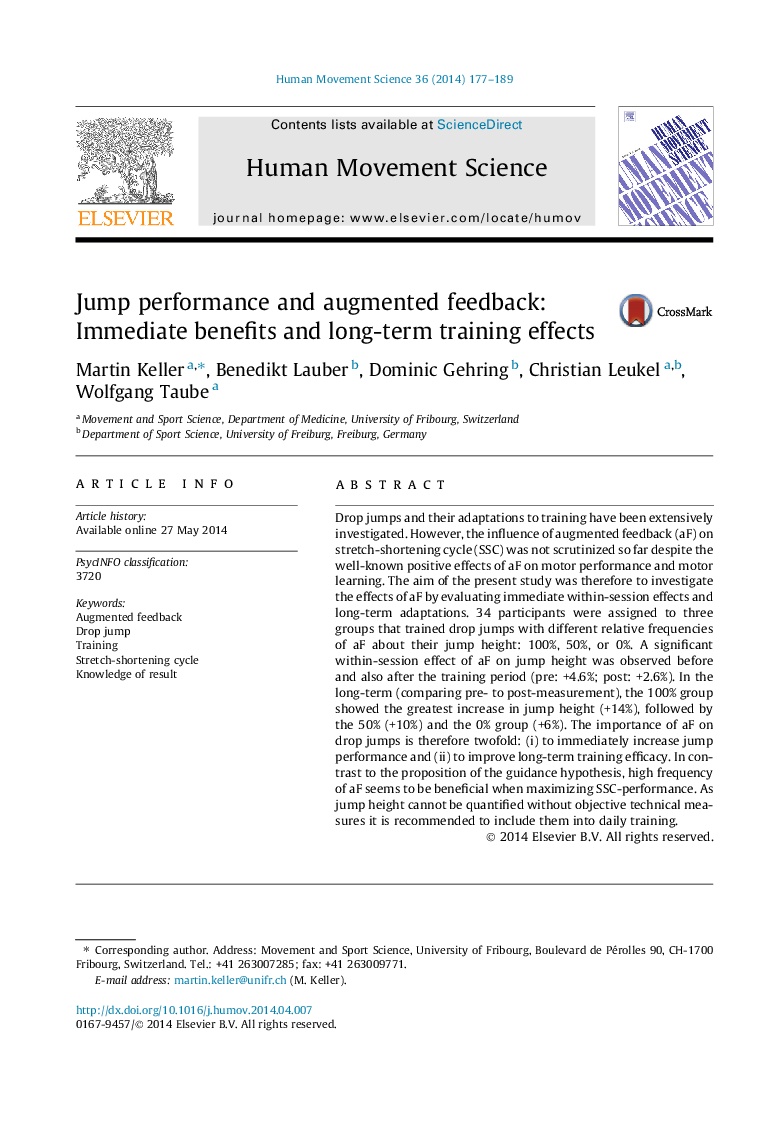| Article ID | Journal | Published Year | Pages | File Type |
|---|---|---|---|---|
| 928332 | Human Movement Science | 2014 | 13 Pages |
•First study investigating short- and long-term effects of augmented feedback.•Strengthens the motivational role of feedback in maximization tasks.•Feedback directly affects jump performance.•Feedback after every trial is better when training maximum drop-jumps.
Drop jumps and their adaptations to training have been extensively investigated. However, the influence of augmented feedback (aF) on stretch-shortening cycle (SSC) was not scrutinized so far despite the well-known positive effects of aF on motor performance and motor learning. The aim of the present study was therefore to investigate the effects of aF by evaluating immediate within-session effects and long-term adaptations. 34 participants were assigned to three groups that trained drop jumps with different relative frequencies of aF about their jump height: 100%, 50%, or 0%. A significant within-session effect of aF on jump height was observed before and also after the training period (pre: +4.6%; post: +2.6%). In the long-term (comparing pre- to post-measurement), the 100% group showed the greatest increase in jump height (+14%), followed by the 50% (+10%) and the 0% group (+6%). The importance of aF on drop jumps is therefore twofold: (i) to immediately increase jump performance and (ii) to improve long-term training efficacy. In contrast to the proposition of the guidance hypothesis, high frequency of aF seems to be beneficial when maximizing SSC-performance. As jump height cannot be quantified without objective technical measures it is recommended to include them into daily training.
